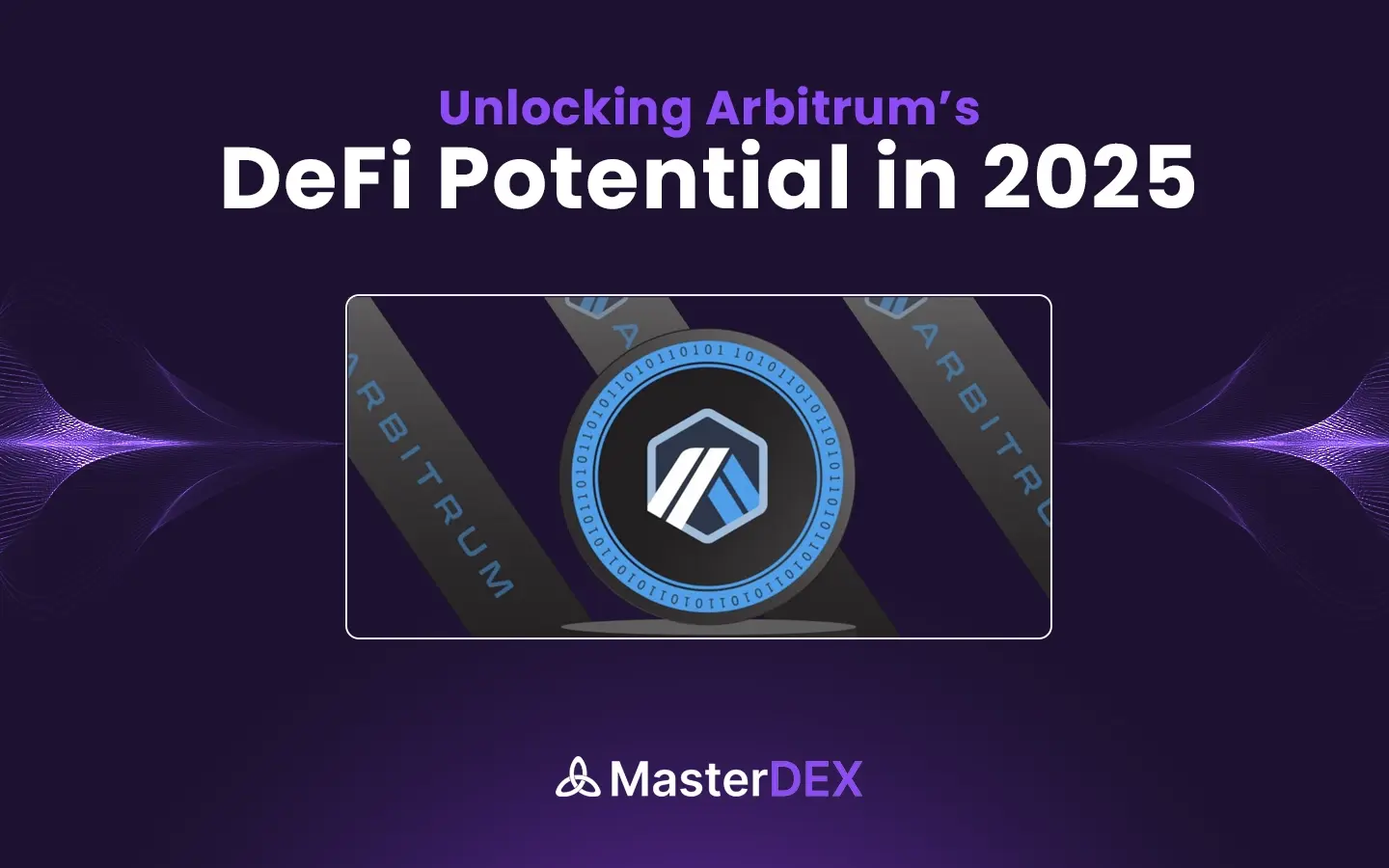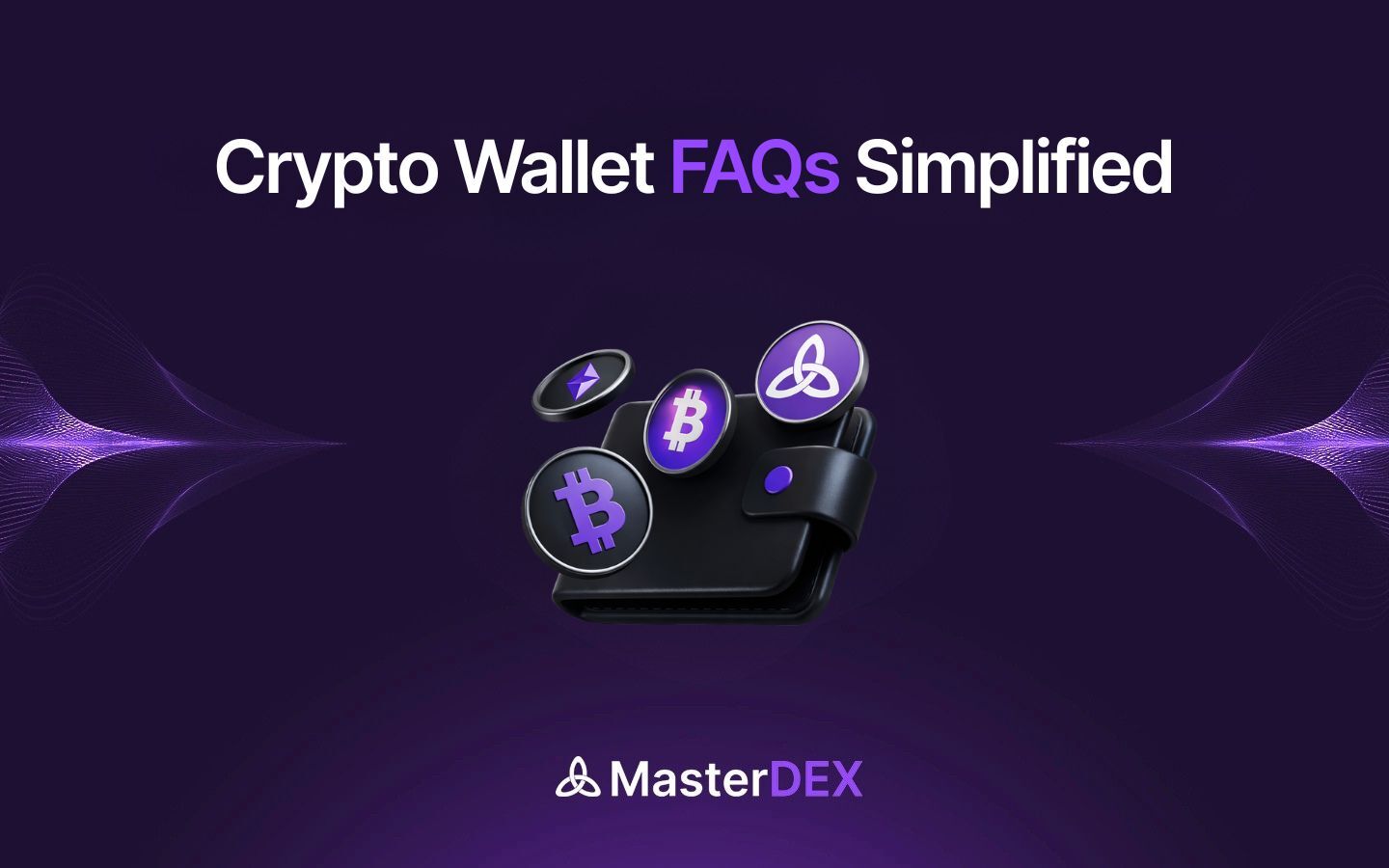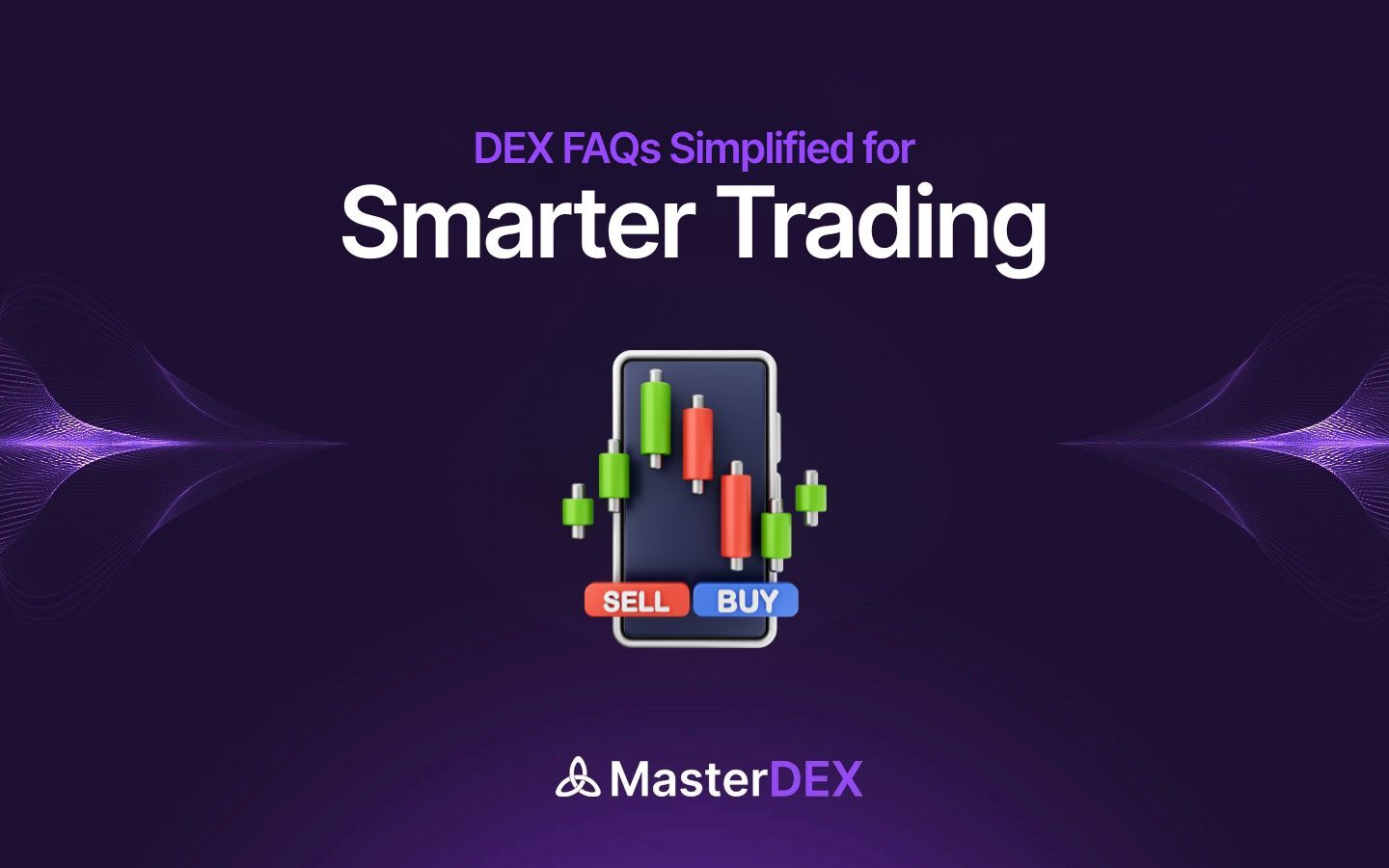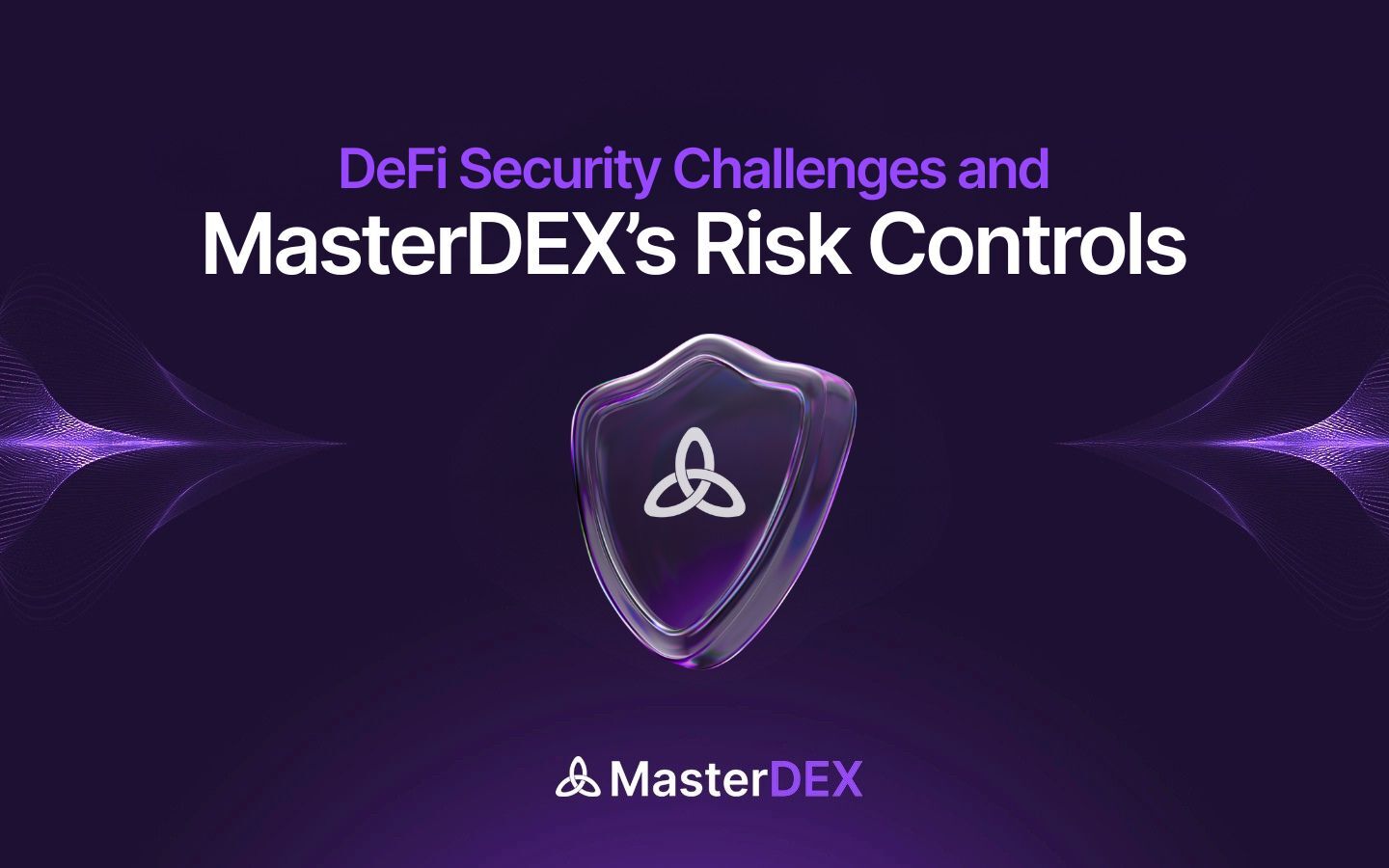DeFi (Decentralized Finance) is evolving rapidly and in 2025, Layer 2 ecosystems like Arbitrum DeFi are leading the way in redefining how decentralized trading and finance work. With Ethereum often plagued by high gas fees and network congestion, solutions like Arbitrum are offering fast, low-cost, and secure alternatives.
As MasterDEX prepares to launch on Arbitrum, it becomes crucial to understand how this ecosystem functions, what makes it stand out, and how it enables new possibilities in DeFi. In this guide, we cover everything from the technical backbone and top protocols to tokenomics, governance, and community development. So let’s get started.
Table of Contents:
ToggleWhat Is Arbitrum and Why Does It Matters?
Arbitrum is a Layer 2 scaling solution built on Ethereum, designed to enhance scalability while preserving the security and decentralization that Ethereum is known for. By using Optimistic Rollups, Arbitrum groups multiple transactions together off-chain and posts a single, compressed transaction back to Ethereum. This drastically reduces fees and improves throughput, making decentralized applications more accessible and user-friendly.
In 2025, Arbitrum has evolved into a modular, multi-chain ecosystem:
- Arbitrum One: The flagship chain for DeFi and NFTs.
- Arbitrum Nova: Focused on high-volume, low-cost applications such as gaming and social media.
- Orbit: A framework that empowers developers to create Layer 3 chains, offering customizable environments tailored to specific use cases.
- Stylus: A revolutionary development tool allowing smart contracts to be written in multiple programming languages like C, C++, and Rust, beyond just Solidity.
This vast diversity makes Arbitrum an indispensable platform for next-gen dApps, supporting everything from finance to entertainment.
Arbitrum TVL and Market Stats in 2025
Arbitrum’s rise has been nothing short of meteoric. By 2025, it boasts a Total Value Locked (TVL) of over $2.5 billion as of March, making it one of the top Layer 2 networks globally. According to various sources, more than 2 million transactions are processed daily, with fees consistently lower than a fraction of a dollar. Apart from this, user adoption is equally impressive, with more than 20 million unique wallets actively participating in various DeFi protocols, NFT platforms, and gaming dApps.
Arbitrum’s robust metrics prove it’s not just an Ethereum sidekick; it’s an essential infrastructure layer for the decentralized economy.
Now that we have understood what is Arbitrum, let’s dig deeper and understand how to move your assets from Ethereum or other blockchains onto the Arbitrum network.
How to Bridge Assets to Arbitrum?
Getting started on Arbitrum involves moving your assets from Ethereum or other blockchains onto the Arbitrum network — a process called bridging. The official Arbitrum Bridge makes this simple. All you have to do is:
- Connect your wallet, such as MetaMask.
- Select the token and amount you wish to bridge.
- Confirm the transaction and pay the Ethereum gas fee.
- Wait a few minutes for final confirmation.
Once the bridging is complete, your tokens will be available on Arbitrum, allowing you to interact seamlessly with popular DeFi platforms such as Uniswap, MasterDEX, etc.
However, it is important to note that new users should always verify the bridge URL and ensure they are using trusted services to protect their funds.
Tokenomics of the Arbitrum DeFi Ecosystem
The ARB token serves as the governance backbone of Arbitrum. Unlike Ethereum’s ETH, ARB is not needed for transaction fees but is vital for community-led decision-making.
Distribution of the 10 billion ARB tokens is as follows:
- 42.78% allocated to the DAO Treasury for future ecosystem development.
- 26.94% reserved for Offchain Labs team members and advisors.
- 17.53% distributed to investors.
- 11.62% granted to early Arbitrum users via airdrop.
This model ensures that Arbitrum remains user-centric and that key decisions about the ecosystem’s future are made collectively.
Top DeFi Projects on Arbitrum in 2025
Arbitrum is home to several leading DeFi projects. Let’s explore some of its top DeFi projects:
- GMX: A decentralized perpetual and spot exchange, GMX offers low-fee, zero-slippage trading, revolutionizing how users interact with leverage products.
- Radiant Capital: This omni-chain money market uses LayerZero’s messaging protocol, allowing users to lend and borrow assets across different blockchains seamlessly.
- Camelot DEX: More than a DEX, Camelot serves as a launchpad for emerging DeFi projects and offers innovative liquidity strategies that benefit early adopters.
- Jones DAO: Provides structured yield products, such as covered calls and options vaults, making complex strategies accessible for DeFi users seeking passive returns.
- Vela Exchange: Focuses on derivatives trading with a professional-grade interface and is quickly becoming a go-to platform for active traders.
Each of these projects represents a pillar in Arbitrum’s DeFi landscape, offering users a rich, diversified financial ecosystem.
What’s New in Arbitrum DeFi in 2025?
Arbitrum’s innovation engine remains in high gear. It has recently introduced Timeboost and launched Converge.
Talking about Timeboost, it is an innovative transaction ordering system now live on both Arbitrum One and Arbitrum Nova. Timeboost provides users the option to access an express transaction lane through a private mempool bidding mechanism. By keeping the mempool private, Timeboost not only minimizes transaction delays but also protects users from front-running attacks and similar risks. Moreover, it establishes a new revenue stream for the Arbitrum DAO, strengthening the economic foundation of the ecosystem.
In addition to Timeboost, Arbitrum has also launched Converge. It is a groundbreaking new blockchain designed specifically for real-world asset (RWA) tokenization and on-chain finance. Developed in collaboration with Ethena Labs and Securitize, Converge sets a strong precedent by debuting with an impressive $7 billion in tokenized assets. This includes $5 billion in Ethena’s USDe reserves and $2 billion worth of tokenized assets from Securitize, signaling strong institutional adoption right from the start.
Key highlights of Converge include:
- Stablecoin-based gas fees: Users will pay transaction fees using stablecoins like USDe and USDtb, providing predictable and user-friendly cost structures.
- Ultra-fast block times: Converge launches with 100ms block times, with plans to further reduce it to 50ms, setting new standards for blockchain transaction speeds.
- Network security via sENA staking: Validators will stake sENA tokens to help secure the network.
- Multi-language smart contract support: Thanks to the upcoming Stylus upgrade, developers will be able to write smart contracts in Solidity, Rust, C, and C++, making Converge extremely developer-friendly.
- Settlement powered by Celestia: Data availability and settlement are handled via Celestia, ensuring scalability without compromising decentralization.
Together, these additions represent a major leap forward for the Arbitrum ecosystem. These innovations not only enhance the scalability of Ethereum Layer 2s but also bridge the gap between traditional finance (TradFi) and decentralized finance (DeFi) through robust tokenized asset infrastructure.
Differences Between Arbitrum One Vs Nova vs Orbit Vs Stylus
To understand Arbitrum in more detail, let’s compare and contrast its multi-ecosystem.
| Feature | Arbitrum One | Arbitrum Nova | Orbit | Stylus |
| Launch Year | 2021 | 2022 | 2023 | 2023 |
| Primary Focus | DeFi apps and NFTs | Gaming, social apps, microtransactions | Building custom Layer 3 chains | Multi-language smart contract development |
| Data Availability | Posted to Ethereum L1 | Verified by Data Availability Committee | Inherits from Arbitrum One/Nova | N/A (Development environment) |
| Transaction Cost | Low (lower than Ethereum) | Ultra-low | Depends on underlying chain | N/A |
| Security Model | Full Ethereum security | Committee-based with fallback to Ethereum | Depends on parent chain (One/Nova) | N/A |
| Target Users | DeFi traders, NFT enthusiasts, developers | Gaming companies, social apps, high-frequency dApps | dApp developers needing custom chains | Developers looking for flexibility beyond Solidity |
| Key Advantage | High composability with Ethereum ecosystem | Extremely cheap and fast transactions | Customizable environments, tailored scaling | Broader developer access with C/C++/Rust |
Spotlight on Arbitrum DAO Governance
The Arbitrum DAO is a decentralized collective that governs the future of the network. With billions of dollars under its control, the DAO funds initiatives like protocol upgrades, ecosystem grants, marketing efforts, and liquidity incentives.
Participation is open to all ARB holders. Users can submit proposals, engage in discussions, vote through Snapshot, and contribute to building a more resilient and diverse DeFi environment.
Past examples of DAO initiatives include ecosystem incentive programs, grant funding for DeFi infrastructure projects, and updates to core protocol features. For platforms like MasterDEX, engaging with DAO governance is an opportunity to help shape the network while securing visibility and community support.
Arbitrum vs. Base: A Battle Between the Two
Both Arbitrum and Base offer compelling Layer 2 solutions, but key differences set them apart:
- Governance: Arbitrum is community-governed through its DAO; Base is controlled by Coinbase, introducing a degree of centralization.
- Technical Capacity: Arbitrum boasts a theoretical maximum throughput of over 40,000 transactions per second.
- Ecosystem Depth: Arbitrum’s DeFi, NFT, and gaming ecosystems are significantly more mature and diversified compared to Base.
While Base offers high real-time TPS and brand recognition, Arbitrum’s open, decentralized architecture makes it the platform of choice for DeFi builders aiming for long-term resilience.
To know more about the differences between Arbitrum Vs Base, check out this.
Final Thoughts
Arbitrum has emerged as a foundational layer for the future of decentralized applications. It combines scalability, security, innovation, and true decentralization, offering a dynamic environment where projects can grow sustainably.
For MasterDEX, launching Arbitrum isn’t merely a technical move; it’s a commitment to being part of a community-led, innovation-first future. With Arbitrum’s robust infrastructure, MasterDEX can offer users faster transaction speeds, significantly lower fees, a seamless trading experience, and early access to the most advanced DeFi opportunities. Together, they pave the way for a new era of decentralized finance.



